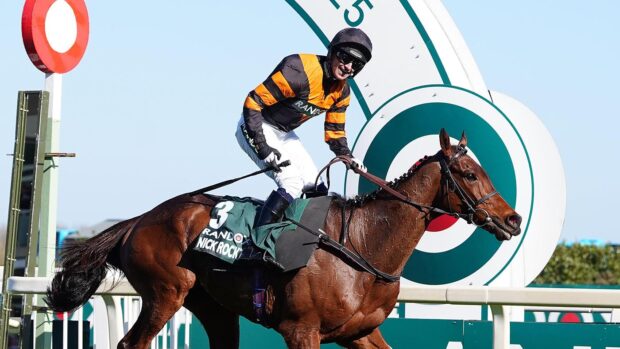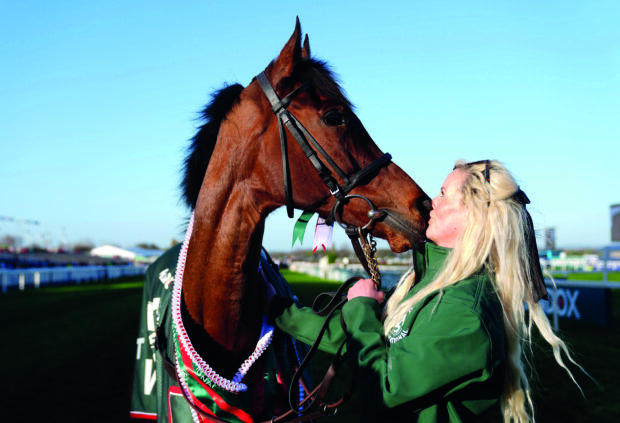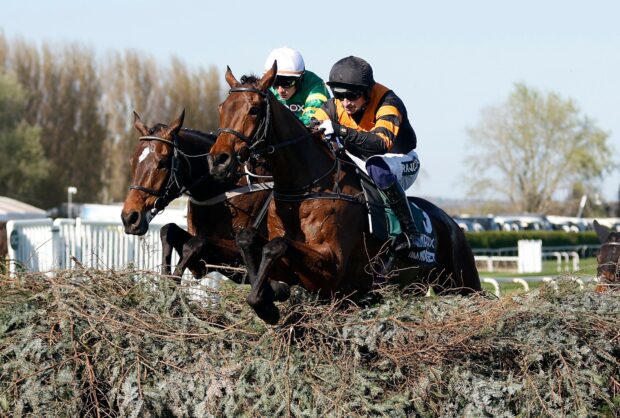Former top jump jockey and coach Brian Harding — who won the Queen Mother Champion Chase on One Man and rode in the Grand National nine times — reveals how the famous Aintree fences should be ridden...
“Any race over the Grand National fences will be high profile and the starter will be particularly strict when it comes to sending the runners off,” says Brian. “All the runners have to be walking towards the start line together.
“The first fence is wide, so I tell the jockeys to give themselves plenty of room and go wide if they want to. I remind them to breathe down at the start and try to relax. They also need to allow the first fence to come to them — if you start looking for a stride that is not there, you will end up on the floor.”
Brian highlighted that getting into a good, galloping rhythm is vital, before the first big question in the Grand National, Becher’s Brook (fence six and 22).
“As you go away from the grandstands into the ‘country’, it suddenly goes very quiet. As a jockey, you want to get your horse into a comfortable slot within the field — don’t get stuck behind something that is jumping badly,” he says. “I tell the riders, if they are behind a horse who is clearly not taking to the National fences, get away from them as soon as possible.
“It is important that the jockeys do their homework beforehand and know what kind of pace will be run, as well as the horses not to follow — it will help them ride the race,” he adds.
“Although Becher’s Brook has been levelled out over the years, there is still a big drop on the inside. Therefore, I say, don’t be scared to edge towards the middle of the fence.”
The Canal Turn (almost a 90-degree turn at fence eight and 24), he added, should be jumped on an angle, which allows jockeys to get a good sight of Valentine’s Brook next up at fence nine and 25.
“At The Chair [fence 15], I again remind the jockeys to give themselves plenty of room because it’s a big fence,” says Brian.
“The fence that follows The Chair is the Water Jump [fence 16], which is smaller in size. Here, it is important the riders keep their horses together underneath them. Some first-time National horses may have got a slight fright at The Chair — because of it’s size — and they may then have a look at the following Water Jump,” explains Brian.
Brian continues: “Crossing the Melling Road for the final time, with just two fences to go, you know at this stage how well your horse is going. At this point, you want to fill up the fuel tank and allow your horse a breather, because it is still a long way from home,” he said. “You think you might be on the winner, however, a lot can happen in those last few furlongs and, as a jockey, you just have to keep kicking.
“The main thing I always tell the jockeys is to enjoy every moment of riding over the National fences — it is very special.”
Keep up to date with all of Horse & Hound’s Grand National coverage this week via horseandhound.co.uk, where you will be able to read all of the latest news and features on the three-day meeting at Aintree.
You might also be interested in:

How to watch Grand National 2025 live streams and TV coverage: your armchair viewing guide

Grand National runners and riders – your complete form guide for 2025

Ready to have a bit of fun? Don’t miss our free 2025 Grand National sweepstake kit

Subscribe to Horse & Hound magazine today – and enjoy unlimited website access all year round
Horse & Hound magazine, out every Thursday, is packed with all the latest news and reports, as well as interviews, specials, nostalgia, vet and training advice. Find how you can enjoy the magazine delivered to your door every week, plus options to upgrade your subscription to access our online service that brings you breaking news and reports as well as other benefits.




